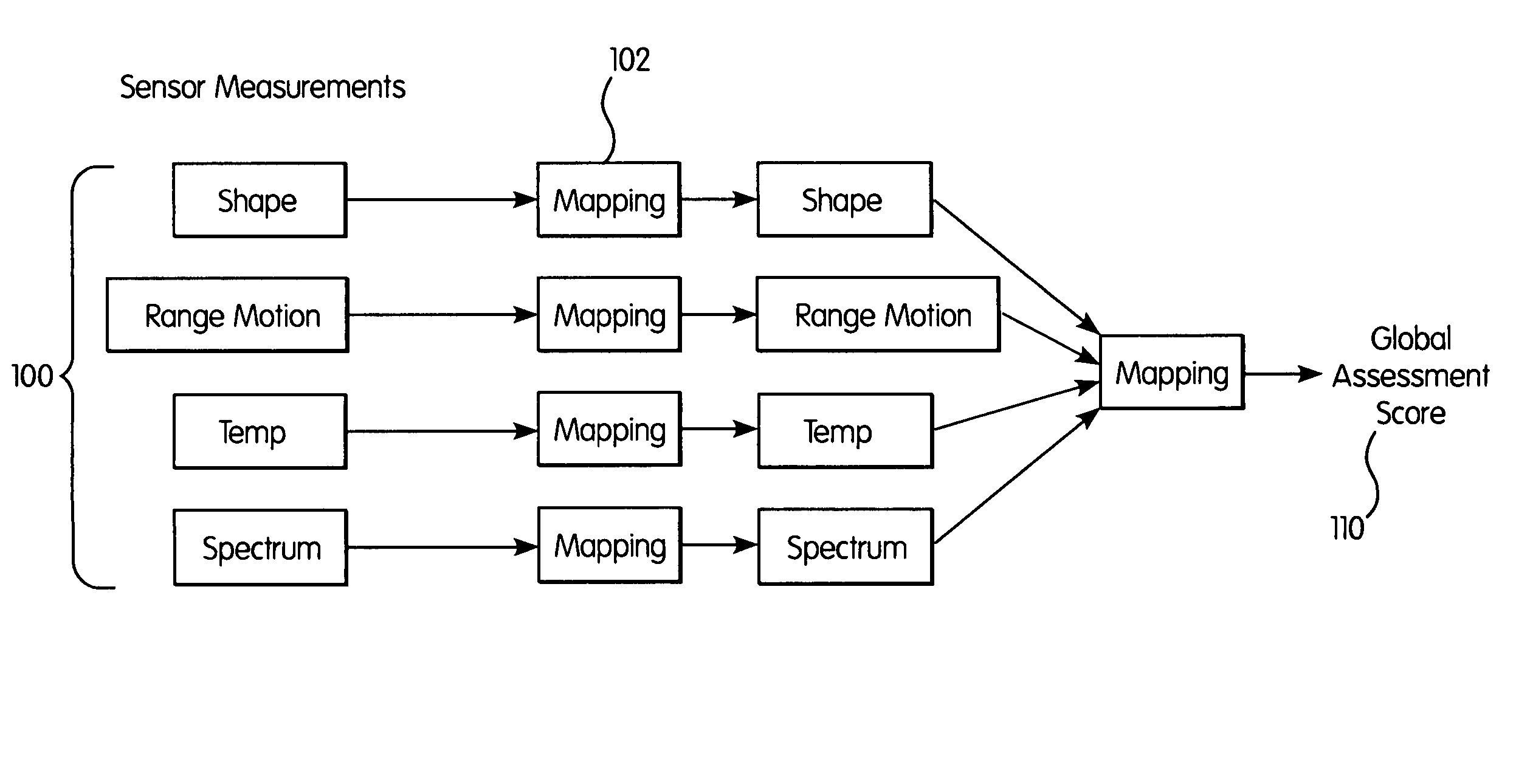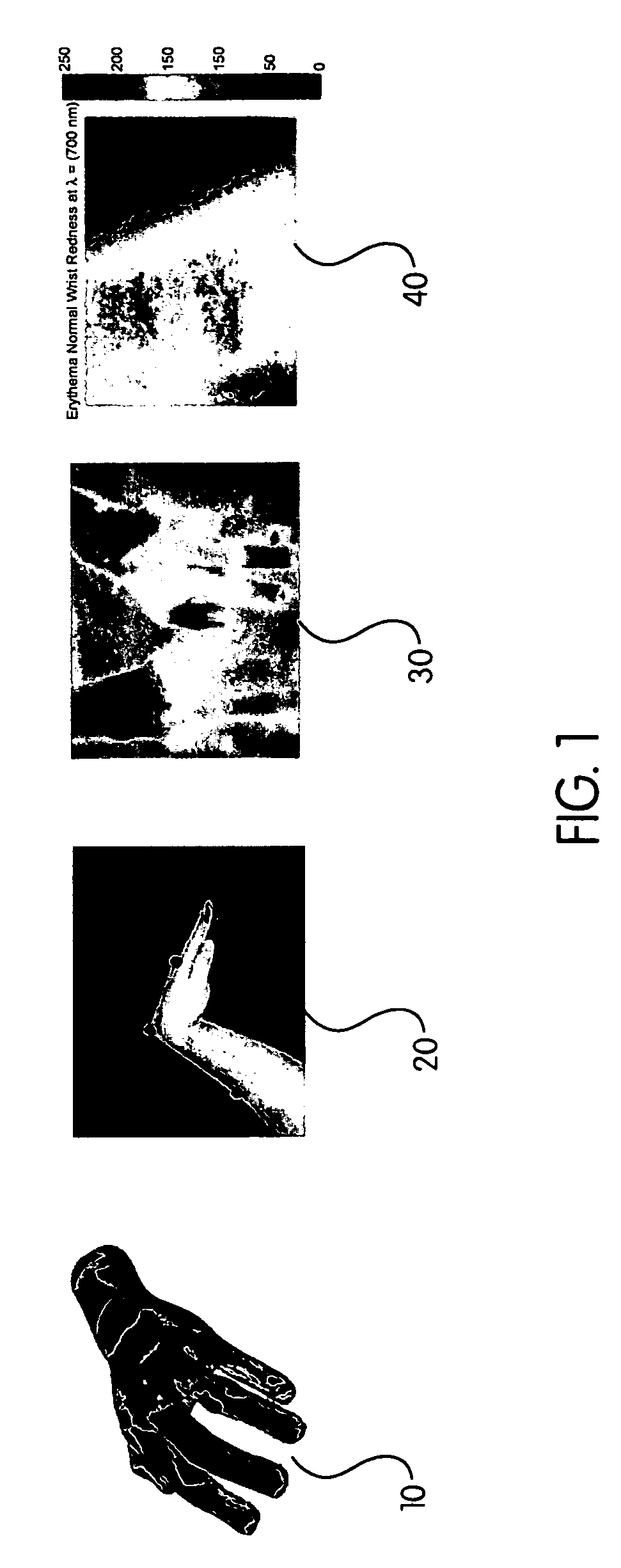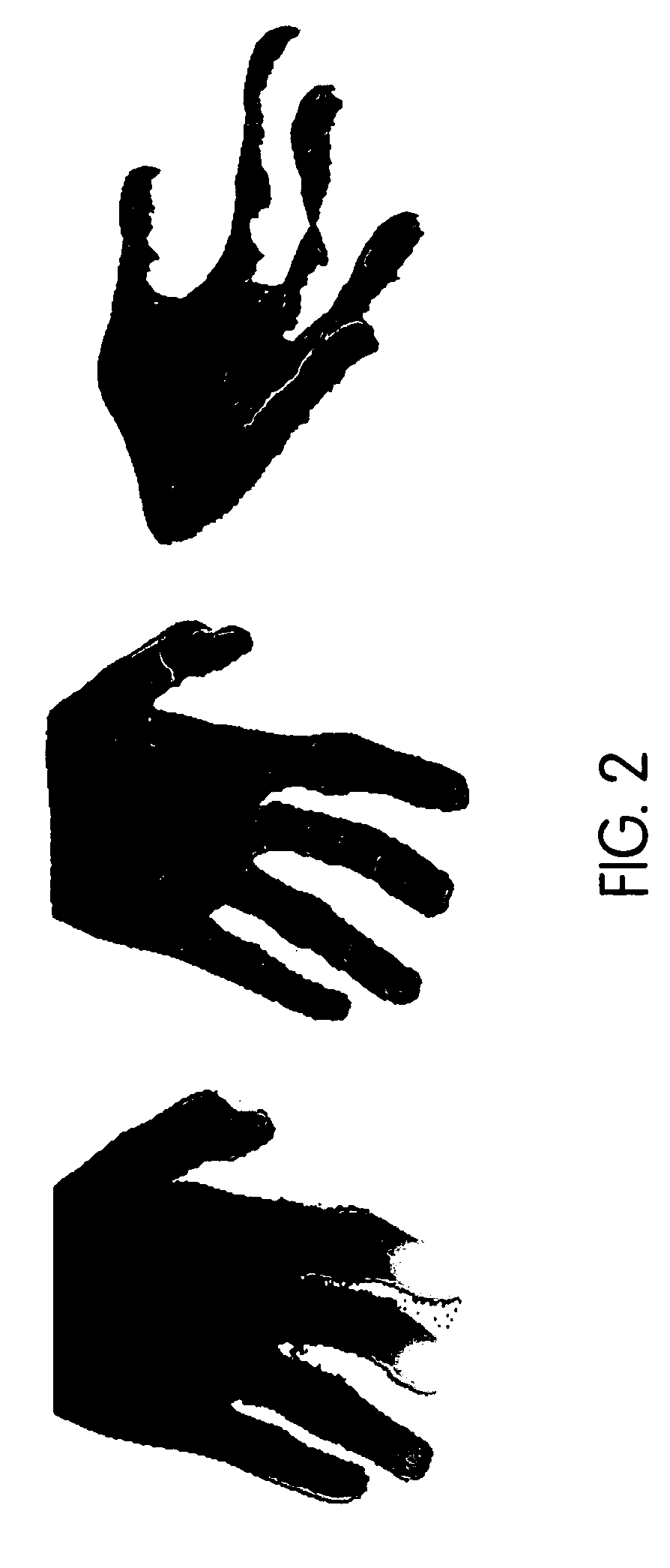Method of assessing localized shape and temperature of the human body
a technology of localized shape and temperature, applied in the field of medical assessment, can solve the problems of subjective process, unreliability, and no longer used as an outcome measure in most clinical studies, and achieve the effect of improving clinical trial outcome measures
- Summary
- Abstract
- Description
- Claims
- Application Information
AI Technical Summary
Benefits of technology
Problems solved by technology
Method used
Image
Examples
Embodiment Construction
[0034]Existing modalities for measuring outcome in the diagnosis and treatment of arthritis are cumbersome, time-consuming, and often unreliable. In contrast, sensor-based technologies can be quantifiable, reproducible and highly reliable. The present invention establishes ways to apply known sensor technology to the diagnosis of arthritis, as well as the assessment and evaluation of joints. In addition, the same technology can be used to image and measure other areas of the body. The methods are being explained in the context of joint evaluation in arthritis patients merely as exemplars of the technology.
[0035]The first modality, 3D imaging utilizing a 3D scanner, is useful for both shape and volume measurement. Shape measurements are useful in comparing recent scans to baseline scans taken during previous examinations. The difference in the shape of the joint can be useful for tracking the effectiveness of therapy and for assessing the presence of swelling in the area of the joint...
PUM
| Property | Measurement | Unit |
|---|---|---|
| wavelengths | aaaaa | aaaaa |
| wavelengths | aaaaa | aaaaa |
| wavelengths | aaaaa | aaaaa |
Abstract
Description
Claims
Application Information
 Login to View More
Login to View More - R&D
- Intellectual Property
- Life Sciences
- Materials
- Tech Scout
- Unparalleled Data Quality
- Higher Quality Content
- 60% Fewer Hallucinations
Browse by: Latest US Patents, China's latest patents, Technical Efficacy Thesaurus, Application Domain, Technology Topic, Popular Technical Reports.
© 2025 PatSnap. All rights reserved.Legal|Privacy policy|Modern Slavery Act Transparency Statement|Sitemap|About US| Contact US: help@patsnap.com



